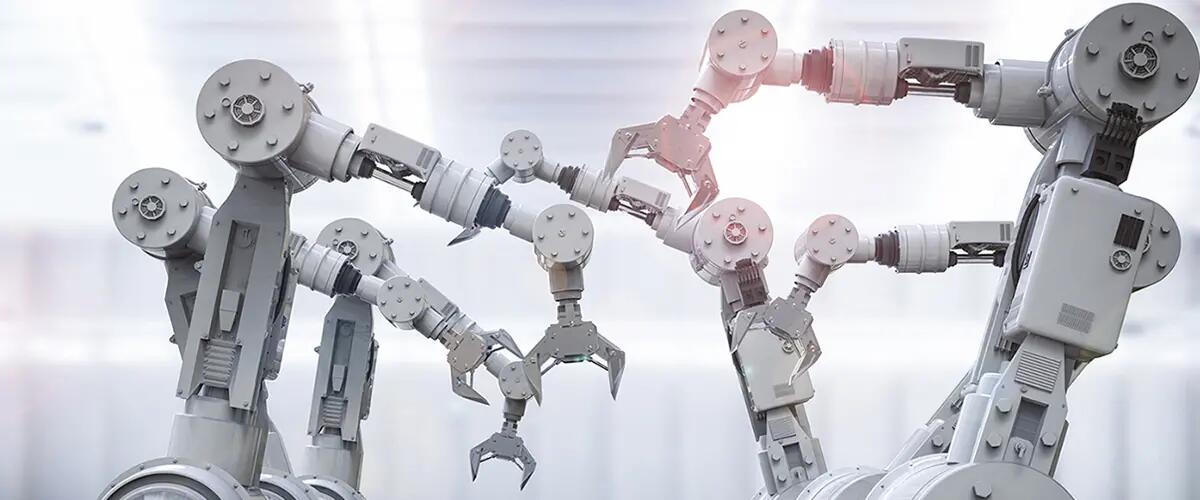
Robots and computer-assisted machines need humans to service them, to upload and download data, to recharge them.
While the Fed taps the brakes, investors ignore the signs
The Federal Reserve has been tapping the brakes on monetary supply with three interest rate hikes since December 2016 yet traders have been shrugging this off. Why?
Former Federal Reserve Chairman Alan Greenspan famously referred to this as a 'conundrum' more than a decade ago – in fact, we saw some of this in 2006 when both bond and stock markets resisted the pull of benchmark interest rates similar to today.
A large part of the run-up in stock prices is really driven by the monstrous liquidity injected into the economy by Ben Bernanke’s Fed (Feb. 2006 to Jan. 2014). For seven years, the quantitative easing (QE) programs flooded $42 billion a month into the economy as the Fed bought the distressed subprime securities. Add to that massive hot capital inflows into the U.S., and you see some real life in our stock markets and even in our housing markets as global buyers bag properties up and down both coasts.
A lot of this “hot” capital is from Asia - Japan and China - but also from Europe, as carry trades (borrowing at low interest rates in order to invest in potentially more lucrative assets) bring the capital into the U.S. As the Eurozone embarks on its own QE program with a 2.6 trillion euro bond-buying program, shoving its interest rates down, money flows to higher-yielding America. Ditto for Japan, as Asians park their capital here.
The Fed has no choice but to tap the brakes by raising rates because it needs to 'unwind its position,' which loosely means that it needs to suck-in that humongous liquidity that is sitting out there. The other reason is to signal a warning to asset markets that there is too much ‘froth on the beer.' That it's time to calm it down. But the markets are not having any of that.
Basically confidence (C-bar), or lack of it, trumps interest rate changes. Despondent investors ignored the drops in Fed rates after 2007 and we had the famous “Liquidity Trap” [watch video of Prof. Langdana explaining liquidity traps and bubbles]. And now ebullient investors are ignoring the Fed when it raises rates and taps the brakes. There really is a nice, yet painful, symmetry in all of this.
Which brings us to the obvious question: are the markets really over-valued? All I can say is that I am not in the market now. Langdana is not buying it -pun intended.
With the unemployment rate so low (4.4 percent in June, 2017), it seems the Fed is trying to engineer a soft landing. However, a textbook soft landing entails several macro symptoms:
- low unemployment rates
- high-capacity utilization
- inflation pressure
- strong real GDP growth
We really have none of these lights flashing any warnings. The ‘low” unemployment rate is misleading - the nation’s participation rate is at 1978 levels at 62.7 percent with 8-10 million working age males, ages 25-54, who have dropped out of the labor force. Besides, the correct unemployment rate under discussion, should be the U6 rate which includes marginally employed workers and discouraged workers who have stopped looking for work. These are missing from the daily news unemployment rate which is U3.

Capacity utilization (the proportion of potential economic output that is actually realized) for an overheated economy should be around 85 percent. We are at 76.7 percent now (June 2017).
Inflation has just dipped below 2 percent again in May 2017 with 10-year Treasury’s at their lowest rates for 2017. An overheated US should be at 5-6 percent, with long bonds signaling future inflation with a rapid steepening of the yield curve. This is clearly not the case now.
And our rate of GDP growth at 2.0 percent (1Q17) certainly does not warrant a Fed that should be attempting a soft landing.
This is not the analysis you are used to seeing from mainstream economists (for example: CNN).
But there are solutions to this potential economic catastrophe and it involves jobs in America.
We do not immediately need white-collar jobs or blue-collar jobs but 'new-collar' jobs. We all know about the 'skills gap.' Approximately 6 to 8 million new-collar manufacturing jobs have been lying unfilled for almost two years now. The skills that these jobs require are not the skills of the manufacturing workers who are, despondently, still looking for employment.
The "new collar" jobs are those that link these workers to the massive robotic boom that is coming. Robots and computer-assisted machines need humans to service them, to upload and download data, to recharge them. Training programs—some as short as two months—can link these angry 'forgotten' American workers to these jobs that will pay more than the ones they lost. Forget bringing coal and 'old jobs' back. It is disingenuous for our current President to promise this. Instead, he needs to make 'new-collar' jobs accessible to these workers.
Robots will still need humans – and these humans are the ones with mechanical/software skills. Here’s a story for you to demonstrate the point. Rutgers Executive MBA students visited the massive Amazon distribution center in Robbinsville, New Jersey.
There were literally hundreds of robots busy at work. Our dear professor Rosa Oppenheim, who was on the class trip, had expected to see scenes from Terminator 2. Instead she was shocked, “Too many humans! There were a lot of humans working alongside the robots.
But seriously, there is over a one-year waiting period to get technicians just to service a wide variety of computer-assisted machinery in the United Sates. Serious training programs that re-engineer our laid-off manufacturing workers will be the solution. Not empty promises or anti-trade polices to keep competition out.
It’s not possible to seriously analyze President Trump’s macroeconomic policies yet. It’s like an old Chinese saying (all Chinese sayings are old, of course). “Sometimes it is best not to look for a black cat in a black room, for there may not be a black cat, after all.” Which means that this administration hasn’t enacted any substantial macro-polices to date. There are no black cats.
Farrokh Langdana is director of the Rutgers Executive MBA Program and a professor of Finance and Economics. The views expressed here are solely those of Professor Langdana.
Photo credit: Phonlamaiphoto/iStock/Thinkstock
Press: For all media inquiries see our Media Kit


